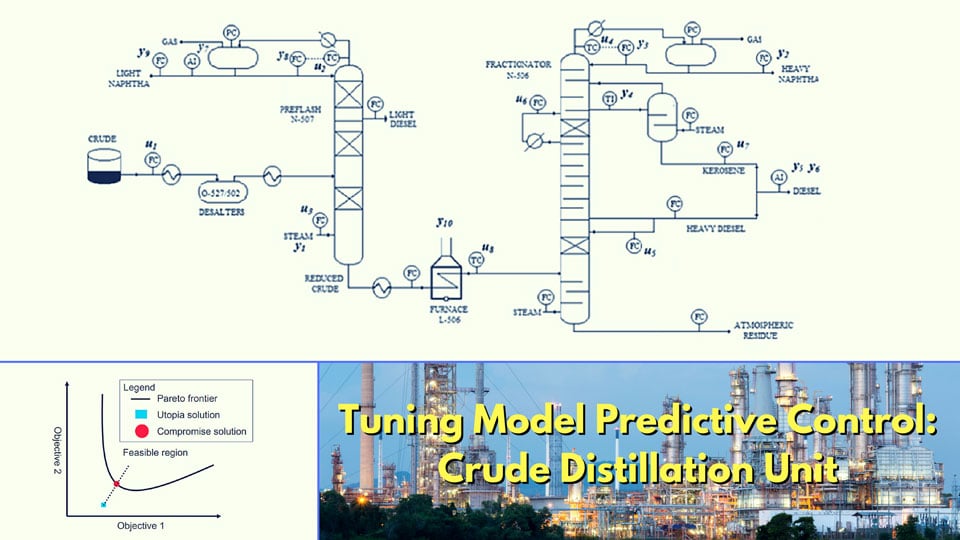This post is an excerpt from the journal ISA Transactions. All ISA Transactions articles are free to ISA members, or can be purchased from Elsevier Press.

Abstract: Tuning the parameters of the model predictive control (MPC) of an industrial crude distillation unit (CDU) is considered here. A realistic scenario is depicted where the inputs of the CDU system have optimizing targets, which are provided by the real-time optimization layer of the control structure. It is considered the nominal case, in which both the CDU model and the MPC model are the same. The process outputs are controlled inside zones instead of at fixed set points. Then, the tuning procedure has to define the weights that penalize the output error with respect to the control zone, the weights that penalize the deviation of the inputs from their targets, as well as the weights that penalize the input moves. A tuning approach based on multi-objective optimization is proposed and applied to the MPC of the CDU system. The performance of the controller tuned with the proposed approach is compared through simulation with the results of an existing approach also based on multi-objective optimization. The simulation results are similar, but the proposed approach has a computational load significantly lower than the existing method. The tuning effort is also much lower than in the conventional practical approaches that are usually based on ad hoc procedures.
Free Bonus! To read the full version of this ISA Transactions article, click here.
Enjoy this technical resource article? Join ISA and get free access to all ISA Transactions articles as well as a wealth of other technical content, plus professional networking as well as discounts on technical training, books, conferences, and professional certification.
Click here to join ... learn, advance, succeed!
2006-2018 Elsevier Science Ltd. All rights reserved.




